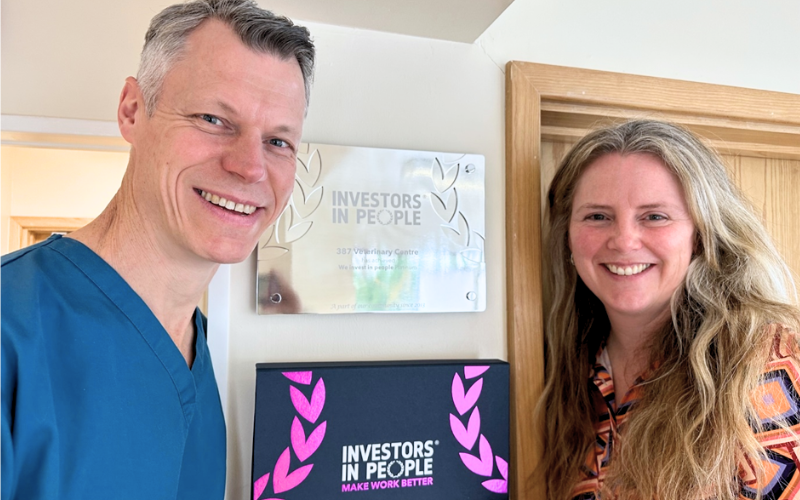By Dr Gemma Barmby BVetMed MRCVS, Business Consultant at Vet Dynamics
Setting up a new veterinary practice can be one of the most exciting yet overwhelmingly daunting ventures you could take in your veterinary career. It’s a huge transition requiring significant support to get right. But don’t be discouraged; there is much help at hand – and if you are reading this article, you are already on the right path to positive practice ownership.
Remember, knowledge is power, and this is especially true when setting up your new practice. Vet school curriculums have changed much over the years and have now begun to emphasise the importance of business skills, commercial awareness, communication skills and the ‘reality’ of being a vet in the big wide world. These changes are most definitely for the better and will help prepare future generations. However, not all of us were privy to this education at the start of our careers and thus have had to learn as we go. Luckily there is a wealth of information out there to get you started on the right footing.
INFORMATION
The first step is to get informed and involved. Surround yourself with the right people. Find an independent community you ‘click’ with and trust. Speak to current and former practice owners, friends, colleagues, or LinkedIn acquaintances who have set up a practice. Attend webinars and congresses, read articles, and do your research. There are many social media pages where people discuss the good, the bad, the ugly, and all the beautiful aspects of being an independent vet practice owner.
Vet Dynamics ran a Start-Up Supercharge at their Conference last year, which brought industry experts together to explore key start-up topics. Suppliers from across the sector answered questions, and successful start-up business owners shared their journeys to help new dreamers bring their aspirations to life.
We are fortunate to be in an era when many new independent practices are emerging—quite a shift from recent years, when the numbers depleted. So, there’s never been a better time to learn from others’ experiences.
WHY ARE YOU DOING THIS?
What we see at time and time again at Vet Dynamics is that those practices that thrive are those who truly know why they own and practice and what they want to achieve. Understanding your ‘why’ (your purpose, your vision) helps keep you on track when things are tough and makes the journey so much easier. So, let’s think about this in some detail.
For You
Author Simon Sinek explains that people don’t buy ‘what’ you are selling; they buy ‘why’ you do it. Think about your why—why do you want to own a vet practice? Why will yours be successful? What is your vision? What values matter most to you? Your answers to these questions provide clarity through the start-up process and beyond.
For Your Team
Unsurprisingly, you can’t do this alone – you will need people – so consider the team you will need to recruit, why should they work at your practice? Why is your practice a good fit for them? Are you trying to achieve the same things? Do you have a vision they can believe in? Do their values align with yours? Define your priorities and values early on to streamline your path forward and recruit the ‘right’ people for your business.
For Your Clients
Simon’s theory also applies to your clients. Realistically, we can’t be all things to all people. For example, and I’m using extreme stereotypes here, are you aiming to be at the forefront of medicine and surgery with the newest kit, the fanciest technology, and the highest-accredited surgeons? Or do you want a proudly community-focused clinic that wants to ensure ease of access to care for pets in the local area? Both are credible goals; one is not better, but each will ultimately attract a particular client base and influence your business model.
My advice if you’re considering a start-up is this: Start as you mean to go on. Spend time clarifying your ‘why’ and develop a robust and healthy mindset. This first step is often overlooked and can complicate things later.
MONEY
Once you know your ‘why’, we can start getting practical. Looking at potential premises and browsing local letting and estate agents can be tempting, dreaming of that big, shiny practice with all its fancy toys. However, you need to consider what is going to be achievable first and foremost. Essentially what can you afford, and how can you go about securing those funds to get the practice of your dreams off the ground.
There are many ways to finance a practice, such as joint venture partnerships, private equity, business loans, private loans, and mortgages. Speak to a specialist financial advisor who can advise on your borrowing options and capabilities. Using a veterinary-specific financial broker such as Shire exposes you to a broader pool of lenders than your high-street bank. Their experience in the veterinary market is also invaluable in considering different ownership types or buy-in models you may have yet to consider.
PLANNING
Have you heard of the 6 Ps? “Prior Proper Planning Prevents Poor Performance.” If you are from a military background, there might be a seventh P to add, but I’ll let you Google that one.
The critical point here is that planning makes all the difference. If we don’t know what success looks like, how do we know when we have attained it?
Many templates are available for a business plan. Most tend to have similar key areas (see Figure 1) that give you a logical, detailed framework for considering all the aspects of setting up a business.
Your accountant or business consultant can help with cash flow projections if you are not overly spreadsheet oriented.
There is often a lot of overlap between the ‘money’, ‘business plan’ and ‘premises’ aspects. Many lenders will want to see that you have thoroughly considered all aspects of owning a business before even contemplating lending your business venture money. And even if you have plenty of cash in the bank, you will need a solid plan to ensure that you spend it wisely. But how much money do you need if you don’t know what building you are looking to purchase or lease? And how can you know what you can afford if you don’t know what funds you can raise? On and on the cycle goes.
So don’t worry if the planning process raises more questions than answers at this stage, that’s okay. It’s all part of the learning process and a great reminder to revisit and review your plans regularly. Whilst all of this might seem overwhelming, it needn’t be. With support from relevant experts and guidance from a veterinary business consultant such as Vet Dynamics you can take each manageable step one at a time and ensure your ownership journey starts in the right direction.
| Executive and Business Summary | Introduce and define your business and profession. Bear in mind that lenders may not be familiar with the veterinary industry. Declare your short and long-term objectives – this is where your vision and your ‘why’ are useful.
|
| Business Structure
|
What is your business structure – limited company or partnership? Who are the key people involved in your setup, and what are their relevant skills?
|
| Competitive and Market Analysis | Who are your ideal clients? Having explored local competition, this is where you can showcase your unique selling proposition (USP) and thought about how you will bring something new to the existing market. |
| Description of Products/Services | Self-explanatory, you should clearly define the products and services you intend to provide.
|
| Financial Plan | As mentioned, you must show that you’ve thoroughly checked that your proposition is viable and a ‘sound’ investment for lenders. Include a pricing plan and cash flow projections. |
Figure 1. Brief overview of a typical business plan
FUTURE FOCUSSED
We’ve seen a significant shift in veterinary practice ownership over the last few years, with more nurses, practice managers, and those with indirect veterinary backgrounds entering the field. We’ve also witnessed enormous advancements in technological capabilities. This diversity and innovation have brought renewed perspectives, fresh thinking, and endless possibilities. One prominent example is telemedicine, which boomed during and after COVID-19 and has enabled us to streamline our practices more efficiently and effectively. And being a start-up means you can implement these tools right from day one.
However, with so many tech solutions now available, it’s worth asking yourself the following:
- How will this make my teams work life easier?
- How will this improve care for my patients?
- How will this enhance my client experience?
- How will this improve my practice performance?
Addressing potential pain points is critical; don’t just use tech for tech’s sake. Companies such as Veterinary IT Services can help you to understand your tech needs, your integration requirements and help to future-proof your practice. From a technology perspective at least.
THRIVE, DON’T JUST SURVIVE
In my work at Vet Dynamics, I meet independent owners who say that sometimes it can feel a little lonely at the helm. So, a final word on community. Be supported, not just by experts and advisors, but by individuals who uplift you and offer honest feedback. Being part of a supportive community provides potent immunity against many of the frustrations, questions, and struggles that can lead to overwhelm and burnout. With independent practice ownership on the rise and ample opportunities available, being part of a community cultivates collaboration, resilience, and the potential for flourishing in veterinary practice ownership.
Yes, owning a veterinary practice will keep you busy in the early days. But if you’ve planned your start-up well and have the proper support in place, it can undoubtedly provide the key to the fulfilment and freedom you deserve.
Article published in the May 2024 issue of VBJ, with our thanks.
Explore our Start Up Academy and other ways we are supporting new veterinary owners and leaders.





